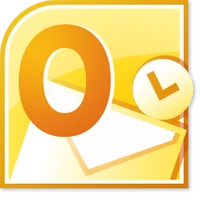When you click new message, reply, or forward in Outlook for Mac 2011, nothing happens. Following is the recommended solution from Microsoft. Not all of them will work for you, in my case I had to go all the way to step #5 to make it work and I did not follow step #3 i.e. to validate fonts.
Step 1: Reinstall Safari
To reinstall Safari, contact Apple support: https://www.apple.com/support/contact/
Safari is a browser installed on your computer. If the browser is not working correctly, Outlook will not function. Therefore, you need to reinstall your browser. You can reinstall Safari browser on your own but if you for any reason can't, contact Apple support. To reinstall Safari, visit Apple Safari web site, enter your email address and click Download Now. Follow directions on your screen, then open .dmg file.

Step 2: Download and install the latest Apple software update
- Click the Apple menu, and then select Software Update. The Software Update window will open and check for available updates.
- If software updates are available, click Continue.
- Click Agree. The download will begin.
- When download is complete, restart when prompted.
If the issue continues to occur, proceed to the next method.
Step 3: Validate Fonts
- Quit all applications.
- In the Finder menu, click Go and then select Computer.
- Open your hard drive.
- Open Applications folder.
- Open Font book.
- Select first font listed and press Command A on your keyboard. All fonts should now be selected.
- Click Edit menu and select Validate Fonts. The validation might take a few minutes to complete. You should see a progress bar. When validation is complete, the font that has a problem will be displayed with the yellow (orange) explanation icon.
- On the top left corner where it states "All", click on the down arrow and choose Warning or Errors.
- Close the window.
- Click Edit and click Resolve Duplicates. If duplicates do not get removed, contact Apple support: https://www.apple.com/support/contact/
If the issue continues to occur, proceed to the next step.
Step 4: Test in Safe Mode
You can use Safe mode to troubleshoot the problem. To restart the computer in Safe mode, click the following article number to view the article in the Microsoft Knowledge Base:
2398596 Perform a clean startup (Safe boot) to determine whether background programs are interfering with Office for Mac.
If the issue continues to occur, proceed to the next step.
Step 5: Clear Login Items
- Quit all applications.
- Click Apple then select System Preferences.
- Open Accounts.
- Click to select the account on the left hand side.
- Click the Login Items tab (top of the screen).
- Under the Hide column, click to clear the box next to each items.
- When done, close the window by clicking on the red dot.
- Restart your Mac and test if the issue is resolved.
- If the issue continues to occur, proceed to step 3.
Step 6: Create a new user account
Sometimes, a user's specific information may be corrupted which can cause problems with applications starting, installing, or using. To determine if this is the case, you can log on as a new user or create a new user account, and then test an application. For steps and instructions on how to create a new user account, click the following article number to view the article in the Microsoft Knowledge Base:
2439218 Testing your user account to troubleshoot Office for Mac applications
Comments